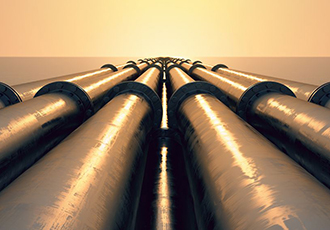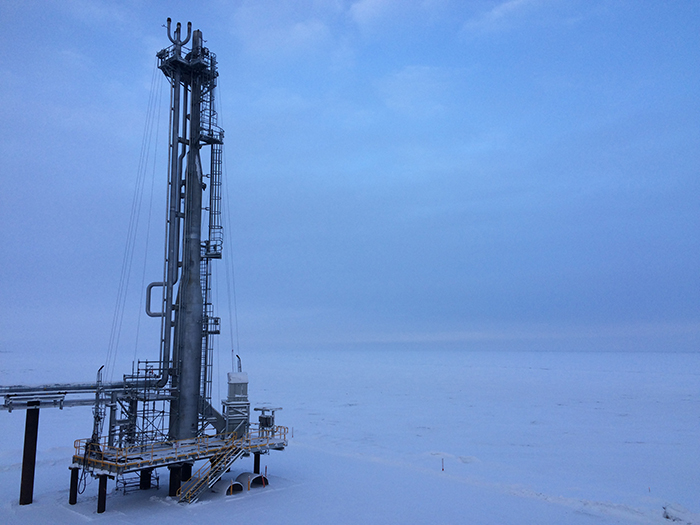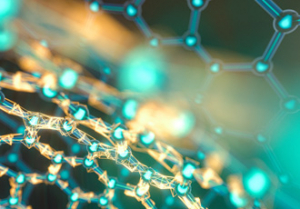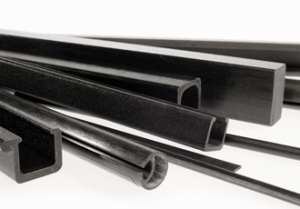We’re living in a material world

Drilling for crude oil, as well as the production, processing, storage and transportation of energy, inflicts huge stresses and corrosion on the materials used. Acid-bearing fluids can eat into pipelines, sulphur and hydrogen sulphide can induce corrosion and temperatures higher than 1,100°F can damage the toughest steel. Just as oil and gas workers must adapt to hostile environments, so must the materials used in their equipment. Here, Martin Phillip, Product Manager at Fluenta explains.
An infrastructure of pipes that carry oil and gas is essential to ensure a steady supply of product to both distributors and consumers. To safeguard such a supply, piping materials, pipe shoes and wear pads must be durable and resilient.
A problem in the pipelines
Corrosion (the deterioration of a metal or its properties), poses one of the biggest threats to the oil and gas Industry. Corrosion issues have the potential to affect every stage of an oil and gas site – from casing strings to production platforms, drilling and abandonment. Corrosion is also difficult to control as it can be caused a number of ways. It impacts the oil and gas industry through its impact on capital and operational expenditures (CAPEX and OPEX) and health, safety and the environment (HSE).
If left untreated, drilling mud – or liquid drilling fluid – that has been exposed to oxygen can corrode drilling equipment and pipelines. Water and carbon dioxide can cause severe corrosion of completion strings and acids – used to remove scale – and will attack metal components. On offshore rigs, crustaceans and seaweed may even attach themselves to submerged parts, adding weight that could increase stress related corrosion.
Field operators, pipeline engineers and designers need to be corrosion conscious as the lines and their component fittings could undergo serious material degradation. This degradation will result in the loss of mechanical properties such as ductility and impact strength. This may not only lead to the loss of materials, but also a reduction in thickness, and could lead to the complete failure of a pipeline. Replacing sections of pipe may require a complete plant shutdown at a significant cost.
Corrosion of pipelines can also have a knock on effect on measurement and reporting equipment used by oil and gas sites. For example, on sites where gas flaring occurs, flare gas meters are often installed to measure flow rates. Pipeline corrosion can drastically affect the accuracy of these flow measurements – if the materials are degrading the flow could be interrupted. If inaccuracies are then reported to regulators, oil and gas companies can face significant fines, penalties and even imprisonment in certain parts of the world.
The oil and gas industry has invested heavily in materials and personnel to try and tame corrosion - but it is almost impossible to prevent. The percentage of high pressure and high temperature (HP/HT) wells has dramatically increased, creating the need for special pipes and premium connections to resist high internal pressure and customised alloys to control corrosion rates.

Photo courtesy of Eduardo Hurtado, Fluenta
A steely defence
Steel is the most important metal component in the oil and gas Industry, used in the production, processing and final distribution of refined products. Carbon steel is an alloy of iron with up to two percent carbon, increasing the strength of the material and its resistance to corrosion. However, carbon steel can contain trace quantities of other metals, such as nickel.
Get gas moving
Due to their high strength and corrosion resistance, steel and nickel alloys are used extensively in gas processing plants and liquefied natural gas (LNG) plants. Any steel with nine percent nickel content will be particularly tough at extremely high and very low temperatures – and is commonly used in heat exchangers. Heat exchangers remove heat from oil and gas at around 392°F and cool it to 70°F, allowing for the safe transportation of fluid.
Titanium is another of the most versatile and valuable metals used in oil and gas. The addition of titanium to steel alloys also increases the material’s strength, density and corrosion resistance. High strength titanium alloys used in compressor parts are durable and increase the working lives of those parts compared with other steel alloys. Titanium is also highly resistant to seawater, carbon dioxide and hydrogen sulphide corrosion. It maintains its strength at the very low temperatures (-240°F) required to liquefy natural gas. Similar to nickel alloys, it is used in heat exchanger tubing in liquefied natural gas plants and in the linings of the pressurised vessels in LNG tankers.
The burning issue
Chromium was one of the first metals to be used in strengthening steel alloys and is still used across the oil and gas industry. In addition to the threat of corrosion, the materials and metals used in oil and gas equipment must withstand extreme heat or cold. Low carbon steel, containing between 12% and 14% chromium, is highly resistant to carbon dioxide, hydrogen sulphide and the high temperatures (above 435°F) found in deep oil and gas wells.
The Kashagan oil and gas field has an ambient temperature between -31 to 104°F. Its harsh conditions and extreme temperatures make it one of the most challenging oil and gas sites worldwide. For this reason it requires the use of special corrosion resistant alloys able to withstand Hydrogen Sulphide and premium connections capable of enduring extreme temperatures for a prolonged period of time.
Following a boom in drilling for shale gas, the use of steel tubing chromium has soared over the last five years in the US. Chromium compounds such as chromium lignosulfonate can be used in drilling fluids as deflocculants - compounds that reduce the fluid’s viscosity and prevent suspended rock material from clogging or corroding around the drill bit.

Corrosion on the cold front
In extreme cold, pipeline systems may experience component failure, such as meter damage from snow or ice shedding off rooftops, or from falling trees due to ice accumulation; thermal contraction stress; fractures due to the expansion of moisture trapped inside components and equipment or device malfunction due to icing.
Copper and its alloys – including bronze - have excellent electrical and thermal conductivity and cryogenic, or cold-resistant, properties. These metals are commonly used in valves, stems, seals and heat transfer applications because of their resistance to temperature change. A bronze alloy with traces of nickel and aluminium can also be used in wellheads and blowout prevention valves to protect processes from the effects of extreme heat or cold.
Copper salts, such as copper sulphate, are also used in gas processing plants to absorb mercury. Mercury occurs in natural gas and separates out during processing. It is both toxic to humans and reacts with other metals in the plant's equipment, causing equipment failure.
Maintenance and collaboration
Newly discovered oil fields benefit from predevelopment planning and the growing knowledge of corrosion control, but it remains important to regularly monitor metal components for damage. Regular maintenance schedules are advised in hostile environments where sea water or extreme temperatures could impact asset performance. With regular equipment checks, potential issues can be identified and dealt with before they become a high cost, time intensive problem.
A helping hand from technology
New technologies are being developed to improve monitoring techniques and reduce the likelihood of equipment failures. Condition-based monitoring (CBM) is a maintenance strategy that monitors the condition of an asset to decide what maintenance needs to be done and when. CBM dictates that maintenance should only be performed when certain indicators show signs of decreasing performance or upcoming failure and will greatly minimise the cost and disruption of repairs. It is far easier to identify a problem early than to deal with an unexpected repair in the future.
The remote measurement and testing of equipment and pipelines helps eliminate human risk. With continuous measurement, operators can discover leaks through a process called mass balancing. By accounting for material entering and leaving pipes, mass flows can be identified which might have been unknown, or previously difficult to measure. For example, operators can use mass balancing to identify corroded valves within their pipe systems that may be causing dangerous leaks. Remote action can be taken to update software, shut down failing or faulty systems, and if there is a danger of explosion, extract on-site personnel immediately.
To select the correct materials, design, fabricate and utilise metal structures for a long life in oil and gas operations – the principles of corrosion must be understood. To save billions of dollars that could be wasted addressing the impact of corrosion in the oil and gas industries – strong and resistant metals are the first line of defence. The second line of defence is regular monitoring and maintenance of on-site equipment – identifying issues before they cost money and dangers before they cost a life.
Similar articles
More from Fluenta
- We’re living in a material world 12th June 2017
- Flow calibration facility launched for pre-shipping meter 5th May 2017
- Fluenta flare gas meter proves its accuracy 9th January 2017












Write a comment
No comments